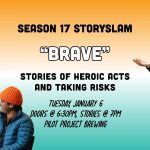Rock
Neil Young & Crazy Horse
By Blaine Schultz It’s all there in black and white – Neil Young’s black Gibson Les Paul and Danny Whitten’s white Gretsch ( well maybe he played the orange one that night). This album is about guitars. While bootlegs of both early and late Fillmore shows have circulated for years, it is great that Neil decided to give this recording a legitimate release. After Young hijacked three members of the Rockets and renamed them Crazy Horse they quickly went into a studio and cut the album Everybody Knows This is Nowhere. That record’s visceral aesthetic was not going to get it confused with any of the Woodstock hippy hangover music clogging radio’s arteries back in 1969. Live at the Fillmore East is the first volume of Young’s long-awaited archive series. While the Fillmore album does not include Nowhere’s “Cinnamon Girl” (the closest tune to a solo hit Young would have until “Heart of Gold” broke the bank in 72), it does add “Winterlong” and “Wondering.” The former would surface on the collection Decade and the latter would not see the light of day until Young’s rockabilly vacation with the Shocking Pinks in 1983 – regardless of how he introduces the tune here. Fillmore also adds Jack Nitzsche’s watery Wurlitzer electric piano to the lineup. At its core Crazy Horse was (and still is) a rhythm section, creating a huge warm hypnotizing pocket for Young’s guitar playing. Meanwhile, back at the Fillmore, the doomed guitarist Danny Whitten (equal parts Georgia hillbilly and California surfer) spurred Young’s playing to dogfight levels that rock & roll would not hear again until a group called Television inhabited the same Fillmore neighborhoods and sonic airspace a decade and a half later. In fact, if you listen close, Whitten’s singing and playing is nipping at Neil’s heels like a young pup – alternate bootleg mixes of officially released songs seem to bear this out. Seems if Whitten hadn’t checked out early because of an overdose he could have been a real contender. He would later be an inspiration for Young’s arguably greatest album Tonight’s The Night. Ironically on Fillmore Whitten sings the rave-up “C’mon Baby Let’s Go Downtown,” a tune about copping and paranoia. But for the real crackerjacks take a listen to the pair’s tremulous singing on the chorus of “Winterlong.” Now tell me, what could cause this terror that makes them sound like Robert Johnson turning the tables and finally chasing the hellhound on his trail? Peace and love with Nixon and Manson waiting down the hall. Which brings us to the twin towers of dread and shred, “Down By the River” and “Cowgirl in the Sand,” two rock & roll epics that sit real nice on the same shelf with Dylan getting rearranged by Hendrix. Could it have been something in the air – Miles Davis was also on the bill at the Fillmore – because Neil Young and Crazy Horse stretch rock & roll’s time/space equation into something that Davis and John […]
Jan 1st, 2007 by Vital ArchivesJanuary 2007
By Erin Wolf January 2 Carly Simon Into White Columbia January 9 Blinded Colony Bedtime Prayers Pivotal Recordings Ty Herndon Right About Now Titan/Pyramid/Universal Lang Lang Dragon Songs Deutsche Grammophon Lil Jon Crunk Rock TVT Erin McKeown Sing You Sinners Nettwerk Rich Schroder Your Kind Words Anova Recording Company Kenny Wayne Shepherd 10 Days Out: Blues From the Backroad Reprise Ron Sexsmith Time Being Ironworks Music Sloan Never Hear the End of It Yep Roc Sqad-Up We Here Now Emergent/92E Trashlight Vision Alibis and Ammunition EVO John Waite Downtown: Journey of a Heart Rounder Yo-Yo Ma Between Friends: A Romantic Journey for Cello Sony Classics January 16 America Here & Now Burgundy/Sony The Holmes Brothers State of Grace Alligator Coco Montoya Dirty Deal Alligator Diana Ross I Love You Manhattan Stars of Track & Field Centuries Before Love and War Wind-up Wanda Sykes Sick & Tired Image January 23 Get Set Go Selling Out & Going Home TSR Kristin Hersh Learn to Sing Like a Star Yep Roc Dustin Kensrue Please Come Home Equal Vision The Affair Yes Yes to You Absolutely Kosher Blackfield Blackfield II Atlantic Doyle Bramhall Foodland Yep Roc The Chemical Brothers title TBA Astralwerks Deerhoof title TBA Kill Rock Stars John Mellencamp Freedom’s Road Universal moe. The Conch Fatboy Pretty Ricky Late Night Special Blue Star Entertainment International/ Atlantic Ken Navarro The Meeting Place Positive Music Only Crime Virulence Fat Wreck Chords Xavier Rudd Food in the Belly Anti-/Epitaph Saliva Blood Stained Love Story Island The Shins Wincing the Night Away Sub Pop You Am I Convicts Yep Roc January 30 Lily Allen Alright, Still Capitol Everlife title TBA Buena Vista/Hollywood Clinic Visitations Domino Harry Connick Jr. Oh My NOLA Columbia Crime Mob Hated On Mostly BME/Reprise Art Garfunkel Some Enchanted Evening Atco Norah Jones Not Too Late Blue Note Hella There’s No 666 in Outerspace Ipecac Dave Koz At the Movies Capitol Permanent Me After the Room Clears Stolen Transmission The Smithereens Meet the Smithereens! Koch 2XL Neighborhood Rapstar Monopoly/Tommy Boy Youth Group Casino Twilight Dogs Epitaph
Jan 1st, 2007 by Vital ArchivesThe Broken West
By Heather Zydek Prior to last fall, The Broken West were The Brokedown, until a Midwest punk band claimed they came up with the name first. After the name change, the quintet released one EP (The Dutchman’s Gold) until Merge recently snapped them up. The band’s own MySpace page describes its sound as “ghettotech/regional Mexican/rock” and cites influences like Unicorn, Spinal Tap and George Harrison. The sound on I Can’t Go On, I’ll Go On, their debut full-length rlease, falls somewhere between the boozy frivolity of classic party rock and the artful pop of classic alt/college-rock. The dozen songs on I Can’t Go On unroll at a medium pace, revealing songwriting that is melodic, if a bit clichéd. The songs are pretty enough not to offend the ear, but stubbornly refuse to stick in the mind the way really, really good songs (and really, really bad songs) do. The exception is “So It Goes,” a lovely, slightly melancholic pop-rock ditty reminiscent of something Teenage Fanclub might have written circa 1990 (see: “Star Sign” on Bandwagonesque). Serious power-pop aficionados and fans of more upbeat classic rock will probably enjoy I Can’t Go On, as will those who prefer the tried and true over the gimmicky and novel. For the rest of us, The Broken West’s music is respectable but more or less forgettable. VS
Jan 1st, 2007 by Vital ArchivesGwen Stefani
By Nikki Butgereit It’s hard to tell who’s copying who when everyone sounds the same, and Gwen Stefani has fallen into this trap with her second solo effort, The Sweet Escape. On the album’s first single, “Wind It Up,” you can sing the lyrics to the Black Eyed Peas’ “My Humps” to its bridge, and the beat sounds exactly like Nelly Furtado’s “Promiscuous.” Minor redemption comes by way of a sample from The Sound of Music and a driving chant reminiscent of 2004’s “Hollaback Girl.” The rest of the music is catchy and enjoyable on its own, but doesn’t work as well when coupled with Stefani’s intensely “personal” lyrics: yet another song about her first love, songs about domestic discord and claims about being “just an Orange County girl,” which come off as terribly contrived in her pouty whine, considering her years of No Doubt and solo fame. The album closes strong with a song co-written by pop hit-maker Linda Perry, who (strangely enough) makes Stefani sound more like herself and less like the other artists on the radio today. It’s this song, the songs produced by No Doubt band mate Tony Kanal and the ballad “Early Winter” that most clearly reflect the creative promise Stefani demonstrated on her first solo album, 2004’s Love. Angel. Music. Baby. Ideally, she’ll focus future efforts more on setting – or, better yet, ignoring – trends, rather than following them. VS
Jan 1st, 2007 by Vital ArchivesOf Montreal
The eccentric title, packaging and track listing initially intimidate, but Of Montreal’s latest is actually quite accessible. It kick-starts as a lively, logical continuation of 2005’s The Sunlandic Twins, then capriciously plunges, only to rocket straight back to the skies. All the while, Kevin Barnes, currently Of Montreal’s lone orchestrator, delivers downtrodden narratives almost sociopathically. He holds a pep rally for controlled substances (“come on, chemicals!” ) and sets “spending the winter on the verge of a total breakdown” against a roller rink jam. Listeners are held, mesmerized “particles in motion,” through his impulses to arrange catfights, cling to seclusion and vandalize property. A sinister sound hits on “The Past Is A Grotesque Animal,” a 12-minute climb of perpetual guitar, dense tremolo and what I can only hope is a pterodactyl. Conversely, “Bunny Ain’t No Kind Of Rider” and “She’s A Rejector” are sing-along singles, exhilarating enough to allow a mere cheek turn at the blatant Prince-riff rip-off on “Labyrinthian Pomp.” Though Barnes’ voice is unarguably more pleasant in a lower register, the record’s best moments are when his singing is utilized as a gadget in its own right, no different from a drum machine or synthesizer. Even better is that, despite the hardships he reveals lyrically, Barnes doesn’t take himself too seriously. “Let’s just have some fun,” he decrees; and who shuns fun? Hissing Fauna is sure to captivate adventurous pop fans of any genre. VS
Jan 1st, 2007 by Amber HerzogClinic
For those with a taste for the peculiar in music, Clinic has always been a safe bet. But since their startling introduction with 2000’s Internal Wrangler, Clinic prefer to play as they please, enjoying their own melodica-infused weirdness and keeping things at their initial level with a menacing blend of garage, punk, hip-hop and world music. After the disappointing slide backwards of Winchester Cathedral (2002), Clinic fans may almost dread the arrival of the newest addition to the land of curious and curiouser. Although Visitations freefalls into the land of the weird, it is a good drop right into the environs of a mental hospital: vocalist Ade Blackburn singing within the confines of a straightjacket, his vocal chords strapped in for the ride, straining at the words with his stifled snarl. Drummer Carl Turney faces a dark corner with his kick-drum pounding out a steady beat, much like a forgotten and bored toddler pounds the bars of his crib. Visitations is thick with references to farming and harvesting – not in a joyful, abundant sense – but calling to mind images of the grim reaper swinging through town. “Harvest (Within You)” advises citizens to “batten down and button up.” In “Children of Kellogg,” the intensity of a one-two fever beat segues into a dreamy clarinet waltz, with the sound of a saw working away at lord knows what in the background. The album displays a strained ferocity, drifting in and out of its bi-polarity to slow down with “Visitations” and “Paradise,” only to snap its jaws with “Family” and “Tusk,” sweating out the meds and nightmares. Although undeniably unsettling in sound, Visitations instigates a need to hit the dance floor, recalling Clinic’s dance and hip-hop foundations and rolling fluidly from one song to the next, incorporating the brashness of punk and adding Eastern elements such as finger cymbals. It’s an album full of hidden moments, built into their strange supports that will satisfy the Clinic fan who likes them to be nothing short of comfortably bizarre. VS
Jan 1st, 2007 by Erin Wolf…And You Will Know Us By The Trail of Dead
Listening to the new album from Austin’s …Trail of Dead reminds me of a 1992 quote from Faith No More’s keyboardist Roddy Bottum, regarding their tour mates Guns N’ Roses, who had morphed from a gritty LA sleaze-metal band into a bloated juggernaut: “I’m getting more and more confused about who’s in Guns N’ Roses, and it’s blowing my mind. Onstage now there’s a horn section, two chick backup singers, two keyboard players, an airplane pilot, a basketball coach, a coupla car mechanics…” One gets the same impression from So Divided. Back when TOD was unleashing chaos-rock on 2002’s brilliant Source Tags and Codes, they were lean and mean, but with their recent releases – 2005’s Worlds Apart and now So Divided – the band has chosen to expand their sound through bizarre stylistic shifts and ballooning instrumentation until you’re left wondering what these guys care about more – writing huge, epic songs, or just being huge and epic? “Stand in Silence,” the first proper song on the album, summarizes this frustration. The track opens with a classic TOD riff; the rhythm marches with a staggering, swaying funk backbeat while the vocals call the listener to action. But just as the song is about to take it to the bridge, it skids off the rails into a confusing symphonic second movement that sounds completely removed from the rock & roll book-ending it. The same thing happens to “Naked Sun,” which inexplicably transforms from a bluesy shuffle into more overwrought Tolkien-soundtrack shenanigans. When …Trail of Dead keep it simple, like on the title track, they’re still powerful, but overall So Divided is a mess with a badass rock record buried somewhere inside. VS
Jan 1st, 2007 by DJ HostettlerThe Decemberists
By Nikki Butgereit Those still afraid that The Decemberists’ move to Capitol Records from Kill Rock Stars indicates a possible sell-out need listen no further than the second track. For 12 glorious minutes, “The Island – Come & See/The Landlord’s Daughter/You’ll Not Feel The Drowning” moves through musical styles and moods ranging from 70s blues to classic Decemberists shanties to close with the melancholy repetition of “Go to sleep now, little ugly / Go to sleep now, you little fool / Forty winking in the belfry / You’ll not feel the drowning.” As is common in the loosely braided indie-rock genre, The Crane Wife is organized under a concept, recreating the Japanese folk tale of the same name. Punctuated by themes of love, trust, greed and loss, the music dramatically weaves calming vocals with hammered dulcimer and hurdy-gurdy. Amidst the antiquity, modernity pops up occasionally with a catchy la-la, na-na chorus. The occasional appearance of the electric guitar stands out. “The Perfect Crime #2” sounds like a Talking Heads outtake, and though quiet enough to maintain the tone of the record, it still manages to rock. The Decemberists create such layered music that second and third listens are required to feel the full effect. And while the music might seem outmoded on the surface, deeper listening reveals a body of work that is taking indie-rock to a new level, one composition at a time. VS
Dec 1st, 2006 by Vital ArchivesRadio Birdman
By Blaine Schultz In the mid-1970s, Michigan native Deniz Tek moved to Australia to attend medical school. There he met Rob Younger, an Aussie who shared Tek’s attraction to the high-energy music of bands like the Stooges and MC5. Tek and Younger formed Radio Birdman, a group that pulled into the New Wave tsunami and released their influential cult classic debut Radios Appear in 1977. Never quite part of any scene, they recorded a follow-up in England (Living Eyes eventually came out in 1981) and imploded while touring in a vehicle dubbed “Van of Hate.” Two decades down the pike and the members have buried the hatchet somewhere other than each other’s heads. September saw Radio Birdman playing Chicago’s Double Door as part of their first ever U.S. tour. The sweaty, shoulder-to-shoulder crowd of faithful had no reason to believe they would ever witness this show. The energy between audience and band was only magnified by years of rock & roll mythology. The sextet of 50-somethings went through amplifiers the way other bands break strings. Which brings us to Zeno Beach, the album the band was touring to promote. You’d expect something heady from a band whose members’ day jobs include trauma surgeon and U.S. Navy jet pilot, and “The Brotherhood of Al Wazah” and “Heyday” recall the open-minded smarts that once got Radio Birdman compared to vintage Blue Oyster Cult. The opening track, “We’ve Come So Far (To Be Here Today),” could serve as the manifesto as well as feature for Tek and Klondike Masuak’s two guitar inter-lock. While vocalist Rob Younger’s presence may not be as manic as 20-plus years ago, his intensity is trained like a laser. Zeno Beach is a welcome chapter in the Radio Birdman legacy. Let’s hope the next installment happens sooner. VS
Dec 1st, 2006 by Vital ArchivesBeck
No artist is ever completely unpredictable: patterns form and grooves are worn. Some have no need to pull themselves away from the paths they’ve already beaten. Sometimes, like Björk or Beck, they simply realign, rearrange, rethink. At its most functional, The Information is a rethink of Beck’s creative relationship with producer Nigel Godrich (now highly acclaimed for his work with Radiohead and Paul McCartney). Here, Godrich usually finds – or at least allows Beck to enter – a reflective mode, as heard on Mutations and Sea Change. Started before and completed after last year’s Guero, The Information naturally features some refraction of Guero’s compilation-like tendencies. The easygoing hip-hop of “Elevator Music” segues into the (deliberately?) “I Feel Fine”-like treble of “Think I’m In Love,” which falls into the street-corner robot dance and muffled beatbox that activate “Cellphone’s Dead.” The Information also maintains Beck’s dedication to craftsmanship, which tightens the art without restricting it. Godrich, for his part, keeps getting better at adapting his own considerable sensibilities to the artist at hand. On Thom Yorke’s solo album, The Eraser, he shrink-wrapped Yorke’s paranoia; here, he’s like a near-telepathically responsive DJ, slapping down the right sounds to match Beck’s multitudinous moods. The overall vibe on The Information is pleasure. It’s not encoded in the lyrics; keep in mind that Beck can write entire albums, like Midnite Vultures, of near-total absurdity. Nor is it right up front in the tunes, but rather a pleasure that Beck and Godrich take in making music, a satellite orbiting each track, receiving and transmitting information. VS
Dec 1st, 2006 by Jon GilbertsonMy Morning Jacket @ The Riverside Theater
By Caz McChrystal + Photos by Kat Berger The Riverside Theater (GO HERE to see more photos from the show) My Morning Jacket presented a perfect specimen of an elusive form at the Riverside Theater this past Tuesday night, the modern rock concert. But it is difficult to tell what a rock & roll concert is supposed to look like circa 2006. Decades of formulaic mayhem have littered the genre with beefed-up boredom and created a vacuum. The days in which a rock band’s greatness was measured by its ability to roll into a city like Rommel and conquer a submissive audience waiting to be played at are over. Rather, My Morning Jacket exploded the notion of what a rock concert is by playing to a rapt audience and treating the show as if it was a fragile being to be nurtured and coaxed out into the open. By the time the lights at the Riverside had gone black and MMJ emerged to open with “Wordless Chorus,” the crowd was already on its feet and moving along with the intelligently complicated rhythms. And it stayed that way for the nearly two hours that MMJ played. The first quarter of the show steadily built upon itself, reaching a high point with the reggae nod “”Off the Record.” The tune’s intro, a direct quotation of the seminal Hawaii Five-O opening riff thawed-out the mid-November crowd, warming up the audience before cooling it down with a run of slower-paced songs. The downshift to slower, searching improvisations broke down the rock show format, in which slower songs usually get tossed in only sporadically, and then only to give the drummer a brief respite. Here, it felt as though the band wanted to give the audience a chance to regroup, and it was well timed. Although some of these extended instrumental breaks noodled a little too long, MMJ never lost the audience. Coming out of this mellow and spacey section, MMJ slid into “Golden,” an archetypal country song off the It Still Moves record. For that song, guitarist Carl Broemel sat before a pedal steel and belted out one of those heartbroken but hopeful Nashville harmonies that felt down home and far out at the same time. This wonderful slide playing, accompanied by the plaintive vocals of Jim James, drove home the fact that MMJ is not just a group of guys who plays instruments, but musicians who not only take pride in their craft, but take it seriously. My Morning Jacket ended its show with the anthemic “Mehgeetah,” which came at the close of a half hour long encore. The impact of the show, however, did not flow from any single song they unexpectedly pulled out or effectively performed, it came from the overall arc of the evening. The concert seemed to ebb and flow, rocking with high intensity for periods only to draw back into esoteric musical self-searching in other parts. The mood would change within some songs, and sometimes without any discernible […]
Nov 27th, 2006 by Vital ArchivesThe Hold Steady
By DJ Hostettler Once upon a time back in the 1980s, there was a genre called “alternative.” It’s hard to believe these days, but back in the day, labeling a band “alternative” actually meant it was an alternative to what you’d hear on your local corporate top-40 radio station. Siouxsie and the Banshees didn’t sound like Pat Benatar, and that was a beautiful thing. Then when “alternative” became meaningless in the 90s, “indie rock” sprung up to remind us that no, Sebadoh doesn’t sound like Pearl Jam either. These days, indie rock still doesn’t sound like what you’ll hear on the local Top 40 station, but thanks to The Hold Steady, it definitely sounds like your local classic rock station. It’s an odd state of affairs when Vagrant Records’ hottest new acquisition sounds like Bob Seger with Thin Lizzy’s guitar solos, but that’s not necessarily a bad thing either. Boys and Girls in America is the perfect title for The Hold Steady’s third full-length. The no-frills hard rock herein evokes images of Midwestern blue-collar Night Moves-style Americana, while Craig Finn’s trademark love-‘em-or-hate-‘em spoken-sung vocals spin yarns about modern boys and girls going to “all ages hardcore matinee shows” (the crazy catchy “Massive Nights” ) and apparently taking lots and lots of drugs (just about every song on the album), giving the retro soundtrack distinctly modern subject matter. The constant theme of teenagers in love taking loads of drugs is worn thin by the end of the record – “Chillout Tent’s” dueling he-said/she-said boy/girl choruses are pretty annoying, to be blunt – but overall, Boys and Girls in America is solid, rockin’ and has a few potential classics (I dare you to not hum along with the “woah-woahs” in “Chips Ahoy” ) without sounding as stale as the classic rock it references. VS
Nov 15th, 2006 by Vital Archives



















